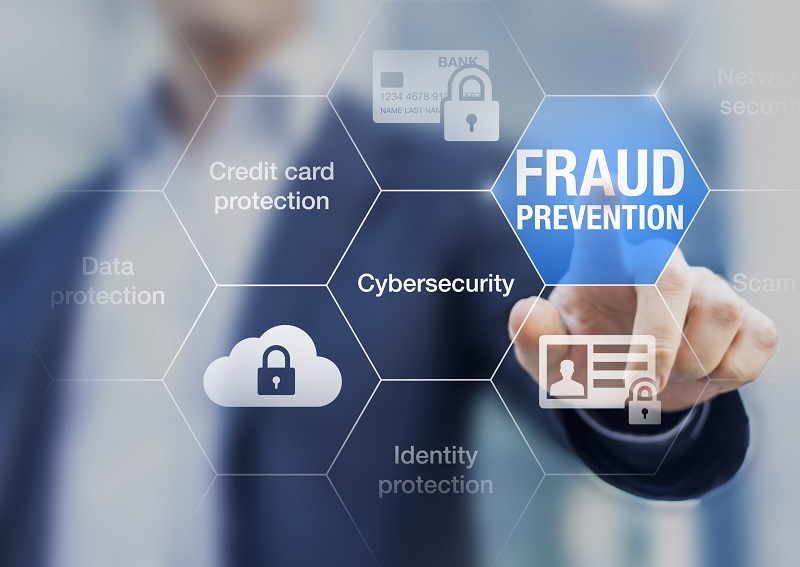
The sophistication of cyber risks, specifically in financial institutions, is growing collectively with the virtual technology. By 2025, it's far crucial for all personnel of U.S. Economic institutions to prevent online banking fraud. Protecting your own home is a normal responsibility, from multi-factor authentication for US banks to steady password hints in online banking.
Since more Americans are banking on their phones and laptops, it is essential to defend against online debts from fraud and discover rising frauds like phishing assaults powered by artificial intelligence. The first step to monetary safety, irrespective of income level, is to remain vigilant and well-prepared.
In this guide, we’ll cover the pinnacle online banking fraud prevention strategies for 2025. Learn a way to spot red flags, put in force defenses, and take manipulate of your digital monetary health.
Cybercriminals have become smarter, faster, and more difficult to trace. In 2024, U.S. Clients said over $12 billion in losses related to financial cybercrime, a good deal of it through digital banking platforms. Experts predict even higher numbers for 2025, except that online banking fraud prevention turns into a day-to-day addiction.
Whether you are the usage of a credit score union app or a global financial institution portal, every login is a security goal. That’s why strategies like multi-aspect authentication for U.S. Banks, secure password suggestions, virtual banking, and tracking unauthorized transactions are more critical than ever.
Multi-factor authentication (MFA) is one of the greatest ways to avoid fraud in online banking. MFA requires more than simply a password and username. It usually consists of:
By permitting multi-issue authentication for U.S. Banks, customers can significantly reduce their exposure to cyber threats.
Most financial systems now provide customizable alerts via SMS, push notification, or email. These can notify you immediately of suspicious interest, one of the most underrated but powerful online banking fraud prevention strategies.
Most banks additionally permit customers to lock and release their money owed quickly—an added layer of control.
In 2025, weak passwords will nevertheless be a main cause of cybercrime. Even with an MFA in the area, strong password hygiene is essential. Follow the secure password hints for digital banking to build your first line of defense:
By following regular password suggestions, digital banking clients keep away from common traps that bring about identity theft and account takeovers.
The sophistication of phishing scams has extended. By 2025, scammers are probably using AI to craft customized messages, which might make it harder for buyers to spot fraud. Phishing protection for American consumers requires focus, education, and the current generation.
Education for older and less tech-savvy individuals, who are frequently targeted, should reinforce phishing safety for American consumers.
Perhaps the most trustworthy way to trap fraud is to screen unauthorized transactions automatically. Even with all precautions in the region, a compromised account can go overlooked without proper oversight.
Some systems use AI-pushed fraud detection, flagging unusual interest in real time. However, no tool replaces the cost of human oversight. Make it an addiction to reveal unauthorized transactions as part of your virtual recurring.

Smartphones, at the moment, are mini-banks in your pocket; however, they come with dangers. Enhance online banking fraud prevention with encrypted apps and biometric security functions.
Even better, many apps alert users to any unusual login attempt or withdrawal—a superb assist for monitoring unauthorized transactions.
Sometimes, fraud goes beyond unauthorized withdrawals. Watch for less apparent signs and symptoms that your account may be compromised:
In those situations, act rapidly:
The sooner you reply, the better your chances of recovery.
Keeping your smartphone, browser, and antivirus software up to date is one of the maximum overlooked online banking fraud prevention techniques.
Always:
Cybersecurity is as strong as your weakest device.
Fraud prevention isn’t just for one character. If you share gadgets or money owed with a partner, child, or caregiver, make sure every person is on the same page.
Sharing those online banking fraud prevention habits facilitates guard absolutely guards everyone in your financial environment.
Despite best efforts, fraud may nevertheless arise. Knowing the way to reply speedy can reduce harm and help recover lost funds.
Most U.S. Banks have a 0-liability coverage for fraud if reported right away. Still, restoration is faster when you act within 24–48 hours.
Technology is likewise evolving to assist clients stay in advance of fraud. Watch for those 2025 trends:
U.S. Banks are increasingly integrating these technologies to lessen fake positives and beef up purchaser consider.
In 2025, virtual convenience comes with virtual obligation. With fraud becoming extra advanced and aggressive, proactive online banking fraud prevention is a ought to for every American consumer. From multi-element authentication for U.S. Banks to phishing protection for American users, staying one step in advance of cybercriminals is all approximately adopting smart conduct and equipment.
Secure password tips, virtual banking, ordinary monitoring, and household attention are not elective—they are essential daily practices. And the good information? You don’t want to be a tech professional to take on managing.
This content was created by AI